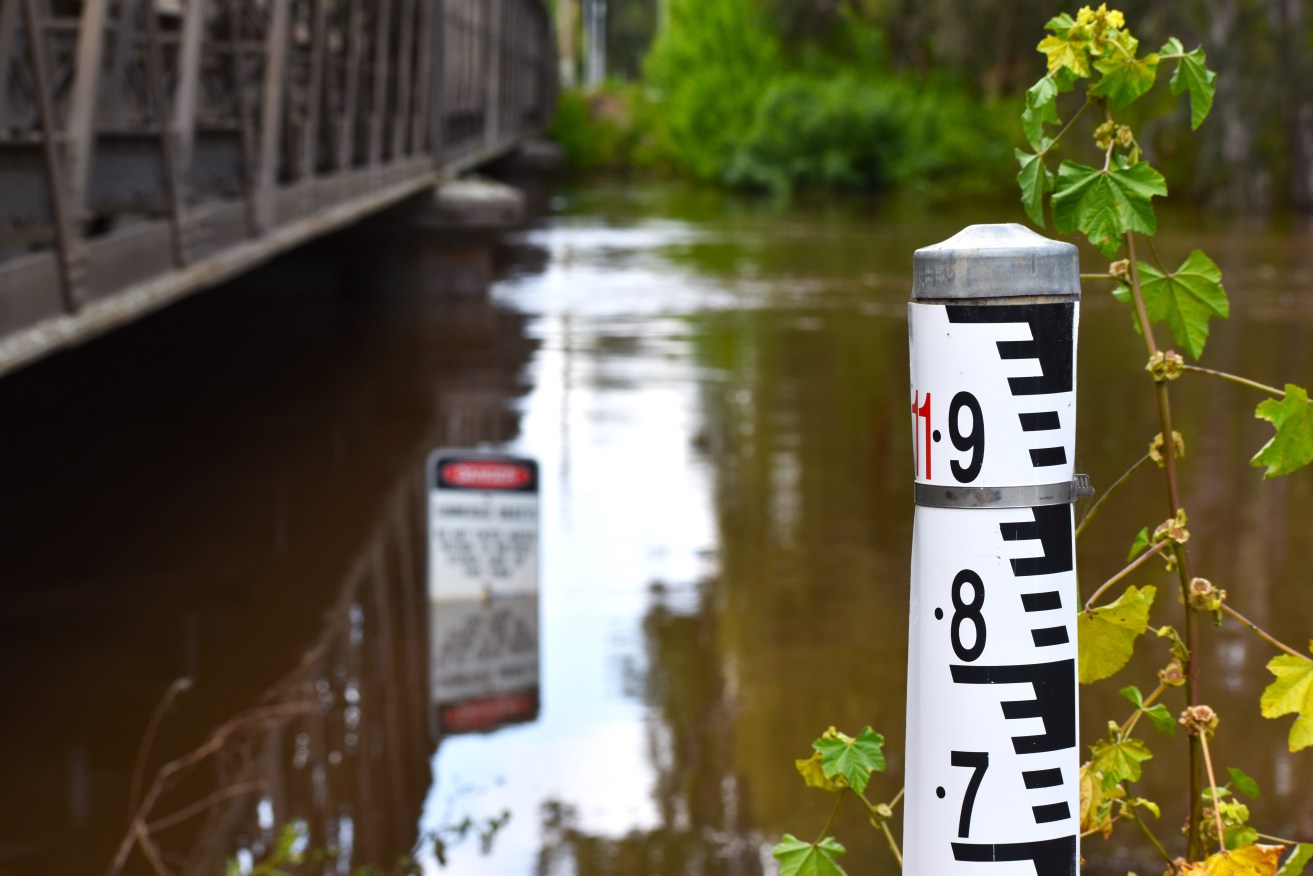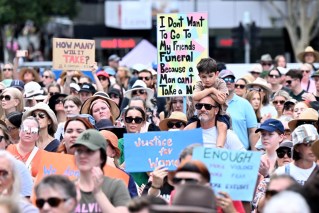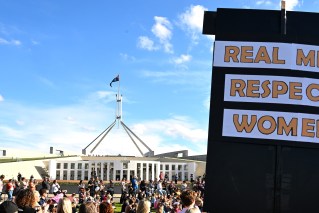Months of misery: NSW towns wake up to reality of the floods that won’t go away
There is no end in sight for the rain and floods hitting NSW, with saturated catchments copping a further soaking, as authorities warn flooding will continue for months.

The Lachlan River in flood at Forbes in the Central West region of New South Wales. Major flood warnings remain in place for nearly a dozen rivers in NSW, as the swollen Murray River threatens to inundate communities on both sides of the Victorian border. (AAP Image/Murray McCloskey)
After a brief reprieve from the rain at the weekend, widespread rain returned on Wednesday.
“This is not good news for our already flood-affected areas,” the Bureau of Meteorology’s Dean Narramore said.
Rain and thunderstorms developing over central Australia will begin to move toward eastern states, including NSW and Victoria, where major flooding is already occurring.
“As we move into Wednesday, we’ll see that system move further eastwards, bringing widespread rain and storms,” he said on Tuesday.
Thursday threatens “quite severe” thunderstorms through eastern Queensland and NSW, set to continue on Friday.
A low pressure system will weaken but be followed by more rain at the weekend.
The downpours could cause renewed flooding along rivers in parts of the northwest, central west and southwest inland catchments, which are already inundated from months of persistent rain.
Residents in East Moama, near the Victorian border, have been told to evacuate by 1pm on Wednesday as the Murray River continues to rise.
Already 300 people in and near Moama have already been told to evacuate this week, and thousands are on stand-by with the area predicted to see flood heights eclipse the area’s second worst on record in 1993.
The SES has distributed tens of thousands of sandbags and set up evacuation centres in the area.
Deputy State Emergency Services Commissioner Ken Murphy said weary volunteers had been dealing with floods since February and everyone needed to prepare for a long, wet summer.
“What we need to be mindful of is this is a very, very long event and broadly across all of NSW, these floods will continue for a number of months,” he told ABC TV on Wednesday.
Emergency Services Minister Steph Cooke said the wet conditions had tested the resolve of flood-weary communities.
“This is what living through a third consecutive La Nina event looks like,” she said.
“Our grounds are saturated and we are continuing to see rain and more rain”.
Major flood warnings remain in place for eight rivers around the state, mostly inland rivers including the Murrumbidgee and Murray Rivers.
Evacuation warnings are in place for people in Echuca and the smaller towns of Barmah and Lower Moira, with the Murray likely to start peaking on Wednesday.
There are concerns river levels could exceed the 94.77 metres recorded during the 1993 floods.
Echuca residents have spent the past few days building a makeshift flood levee from sandbags to try and protect thousands of homes and businesses.
Flood warnings are also in place for towns along the Loddon, Campaspe and Goulburn rivers.
Overnight on Tuesday, major flooding happened at Appin South on the Loddon River and at Rochester on the Campaspe River with residents being told to move to higher ground.
Major flooding at Kerang from the Loddon River is expected overnight on Wednesday, with the water forecast to peak around the January 2011 level.
A sandbag levee is expected to help keep the majority of the town dry, but it could be cut off for up to seven days.
Floodwaters are starting to recede in the hard-hit towns of Rochester and Shepparton but Premier Daniel Andrews warned the state’s flooding risk was far from over.
“We are going to see more rain,” he told reporters on Wednesday. “We’ve still got many thousands of people whose … homes are full of water.
“We have others who can’t get back. It’s a very challenging time.”
Up to 400 Australian Defence Force personnel are being deployed across the state to help with sandbagging, rescues and deliveries of supplies to flooded communities.
The state government on Tuesday announced a $5.5 million food relief package to ensure flood-affected families don’t go hungry.
Free kindergarten is also available for families in flooded communities, while senior students sitting their VCE exams will also receive additional support.
With the state’s river systems already reaching their peaks, the Bureau of Meteorology is warning more rain and thunderstorms are on the way.
There could be between five to 15 millimetres of rain for much of the state on Friday, while the northeast could record up to 50 millimetres.
Residents are being advised to head the flood warnings and evacuate or move to higher ground if necessary.
They should also stockpile medication and other emergency supplies in case they’re cut off, and avoid driving through floodwaters, Andrews said.
“It just means we’ve got to send crews to rescue you,” he said. “It’s dangerous for you and it’s dangerous for them.”
Closer to the coast in the NSW Hunter region, the bureau warns of a renewed flood threat on some rivers as rain continues, with the flood-prone Wollombi Brook likely to flood later in the week.
The bureau is also keeping a close eye on the Lower Hunter River and Colo River north west of Sydney.












